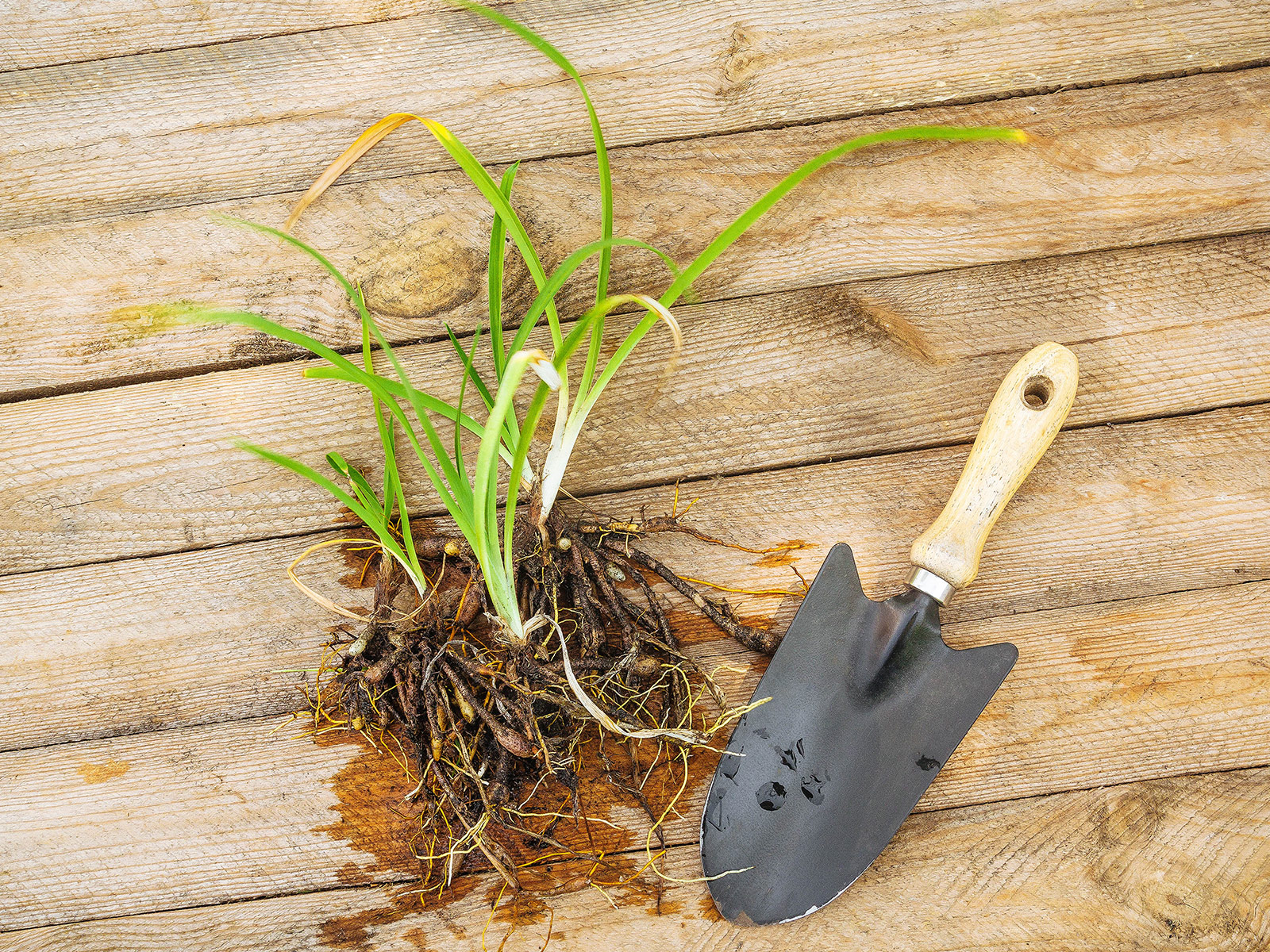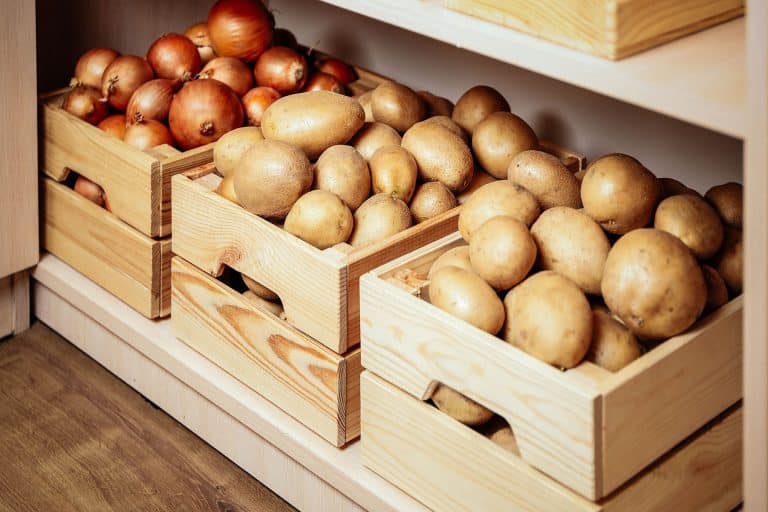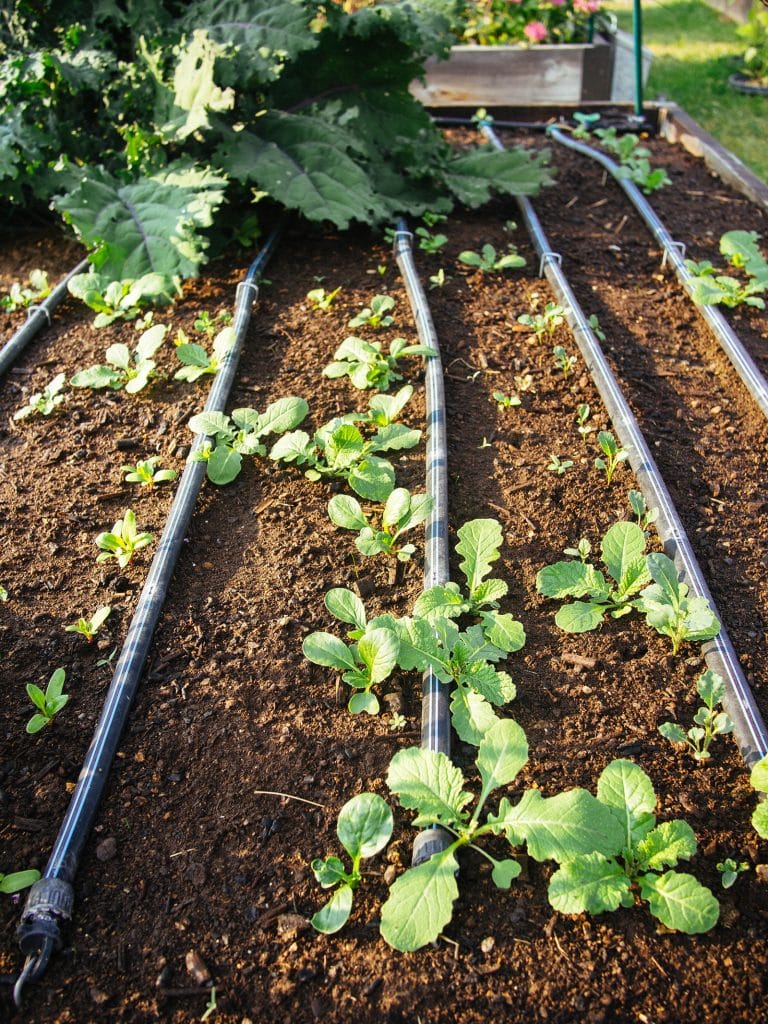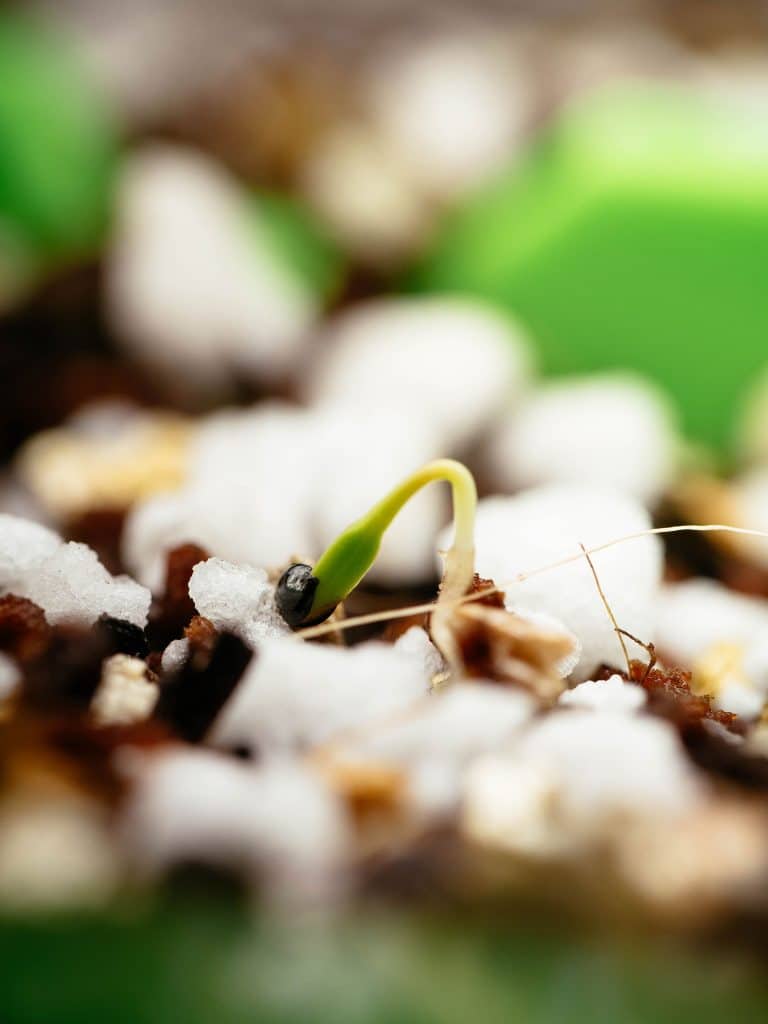If you’ve had perennials in the ground for a while, chances are, things might be looking a little crowded by now. Pruning only goes so far, and after a few years, your plants may need to be divided to control their size and rejuvenate growth.
A bonus of this task is: you also get some free plants out of it!
Not all perennials should be or need to be divided, however. Some of them actually resent being disturbed once they’re in the ground (including baby’s breath, false indigo, lupine, butterfly weed, clematis, and Russian sage), while other perennials with woody stems or long taproots can be tricky to divide and replant with success (such as lavender, rosemary, thyme, sage, periwinkle, and burning bush).
Signs that a plant needs to be divided
Perennials generally need to be divided every three to five years, but this schedule isn’t set in stone. Some plants may do better being split every year, while others can wait a couple more years. Your garden will tell you when it’s time by giving you a few visual cues:
- Fewer or smaller blooms
- Less vigorous growth
- Super dense growth beyond the plant’s intended spot
- Sparse foliage on the bottom, giving your plant a leggy look
- Dead or bare spots in the center of the plant
And of course, you might want to split your plant when you have a spot to fill in the garden or when your neighbor wants one!

When to divide
A good rule of thumb for knowing when to divide perennials is to divide them opposite of when the plants bloom.
That means you should:
- Divide spring-blooming perennials in fall (after they’ve finished flowering)
- Divide fall-blooming perennials in spring (before they really get going)
Related: Follow this fall garden checklist to prep your yard for spring
The timing is important because you want all the plant’s energy to go toward developing more roots and leaves. Wait for a string of cool, overcast days to reduce heat stress on your plant when you divide and replant it.
Fall divisions should happen four to six weeks before the first hard frost, so your plants have time to grow new roots before the ground freezes.
Read more: How to find your first and last frost dates to plan ahead for planting
Spring divisions should be done right after new growth emerges. At this stage, the root system’s stored energy will help the plant recover from being cut apart and moved.
Disclosure: If you shop from my article or make a purchase through one of my links, I may receive commissions on some of the products I recommend.
How to divide
Make sure your plants are well watered a day or two before you plan to split them. Before you put a shovel in the ground, have a game plan in place for where the new divisions will go—you don’t want them to dry out while you look around for their new home.
To reduce moisture loss and help your plant recover faster, trim back the foliage by at least half. I sometimes only leave about 6 inches of growth above ground—don’t worry about this drastic haircut, your plants will grow it all back!
Prepare the planting space (amending the soil as needed) and, if you have lots of perennials to split, keep a bucket of water nearby to keep the roots moist while you work.
If you can’t replant the divisions in the ground right away, put them in containers until you have a permanent place in the garden for them.
Once you have your tools and space ready, it’s time to dig! Use a shovel or spade and dig 4 to 6 inches away from the base of the parent plant. Gently lift it out of the ground, shake off any loose soil, and remove any damaged or discolored roots and leaves (as well as any hitchhiking weeds).
Recommended tools
How you divide a plant will depend on what its root system looks like:
Spreading root systems
Plants that have spreading root systems with matted roots (like bee balm, coneflowers, and asters) can simply be pulled apart by hand or cut apart with a knife. If the plant is very large, you can separate the roots by placing two digging forks back to back and prying the roots apart.
Divide the plant into individual clumps, each with three to five healthy shoots. (Discard any clump that has a hole in it.)
Replant each clump with the base of the stems right at soil level.
Clumping root systems
Daylilies, hostas, and astilbes are common examples of plants that have clumping root systems. These perennials can be divided by using a sharp knife to slice right through the clump (from the crown down).
Each clump should have at least three leafing shoots (though if you want more—albeit smaller—plants, you can usually replant a clump with as little as one shoot on it).
Plant each clump at the same depth the original plant was growing.
Rhizomes
Rhizomes are underground stem systems that grow horizontally just below or on the soil surface. Canna lilies, calla lilies, and bearded irises are common examples of plants with rhizomes.
To divide them, dig up the plants and break apart the rhizomes by hand. Each division should have a few inches of rhizome and some leaves. Cut back the leaves by about half to encourage the newly separated rhizome to focus on establishing its roots before worrying about its foliage.
Replant each rhizome with the top part barely below or even with the soil level.
Bulbs
Early-blooming spring bulbs like daffodils, tulips, and hyacinths multiply over time, with smaller bulbs growing as offshoots from the main (parent) bulb. Wait for the leaves to die back completely before you divide them—this ensures the bulbs have stored enough nutrients to survive until the following spring.
I usually divide my bulbs in summer when the leaves are brown but haven’t totally decomposed; that way, I know where to dig for each plant. (But you can also do this in fall while the bulbs are still dormant.)
Use a hand fork or trowel to dig under the plant and lift the entire clump of bulbs out of the ground. With your hands, pull the smaller baby bulbs apart from the parent bulb. Discard any bulb that’s soft, diseased, or damaged, and keep only the ones that feel firm and look healthy to replant.
















For Amaryllis, I plant mine in the garden in the spring in a semi shade spot and then dig them up and pot them in the fall and bring them in to the house. They die back and then bloom around February. You need to do something different to get them to bloom at Christmas time.
I would really loke to find out after care of Amarlisis as far as wintering them in a cold area for a few months then?new dirt in the pots trimming roots etc etc HELP I really like my dozen amarylisis Thanks oreoman36A aol.com
how do you divide rhubarb?